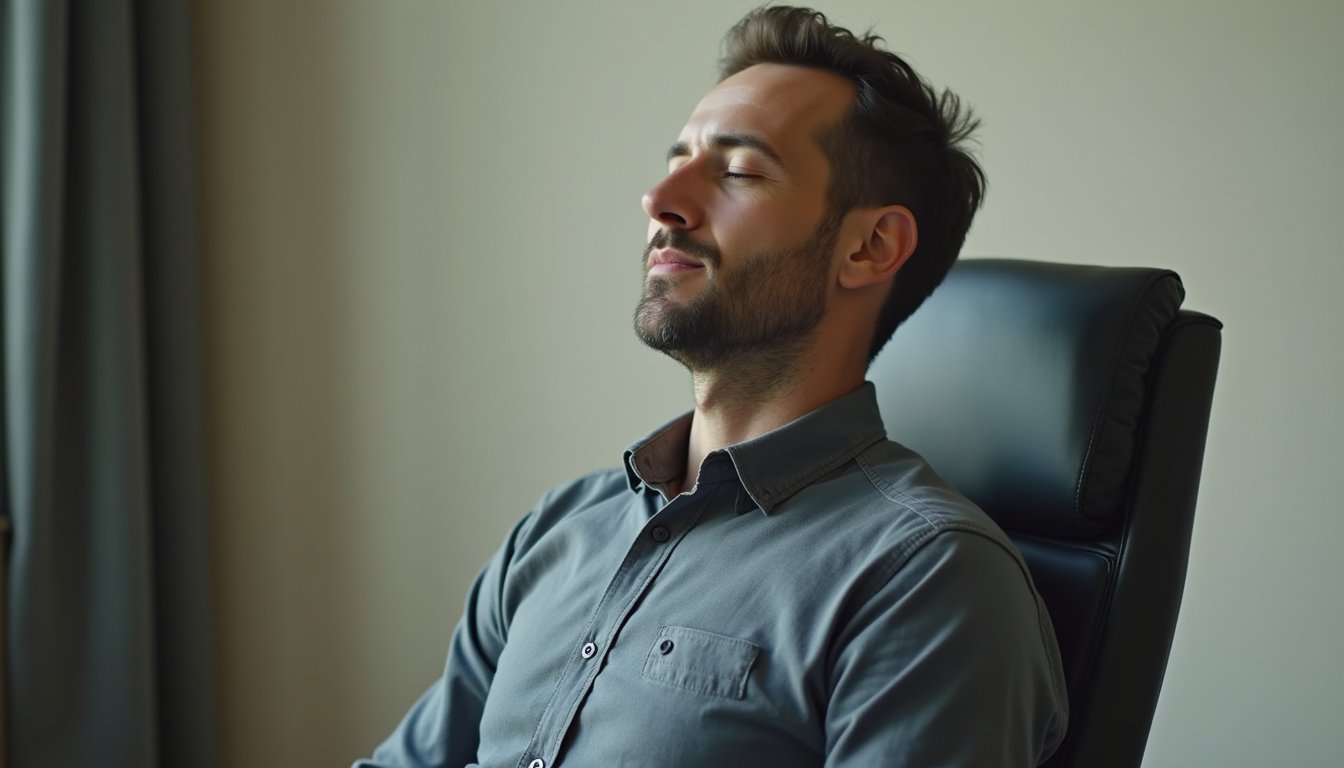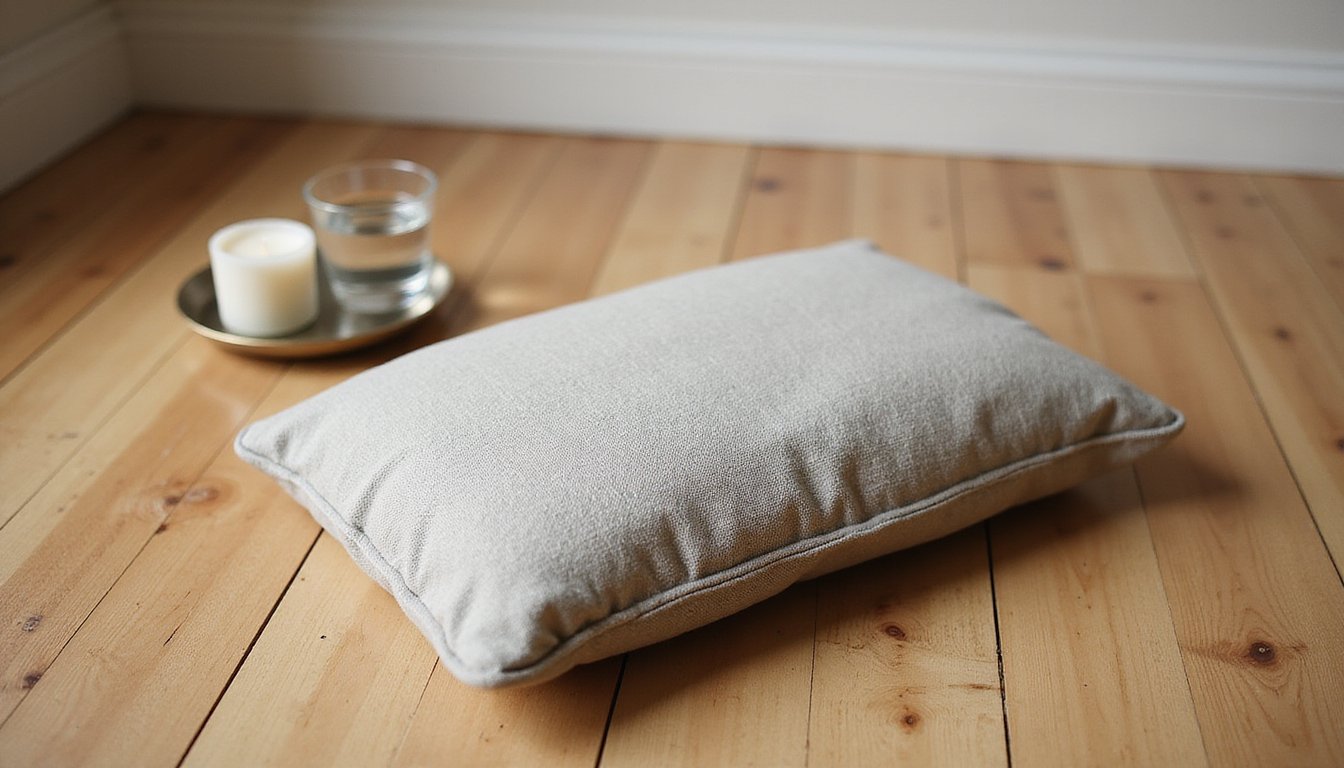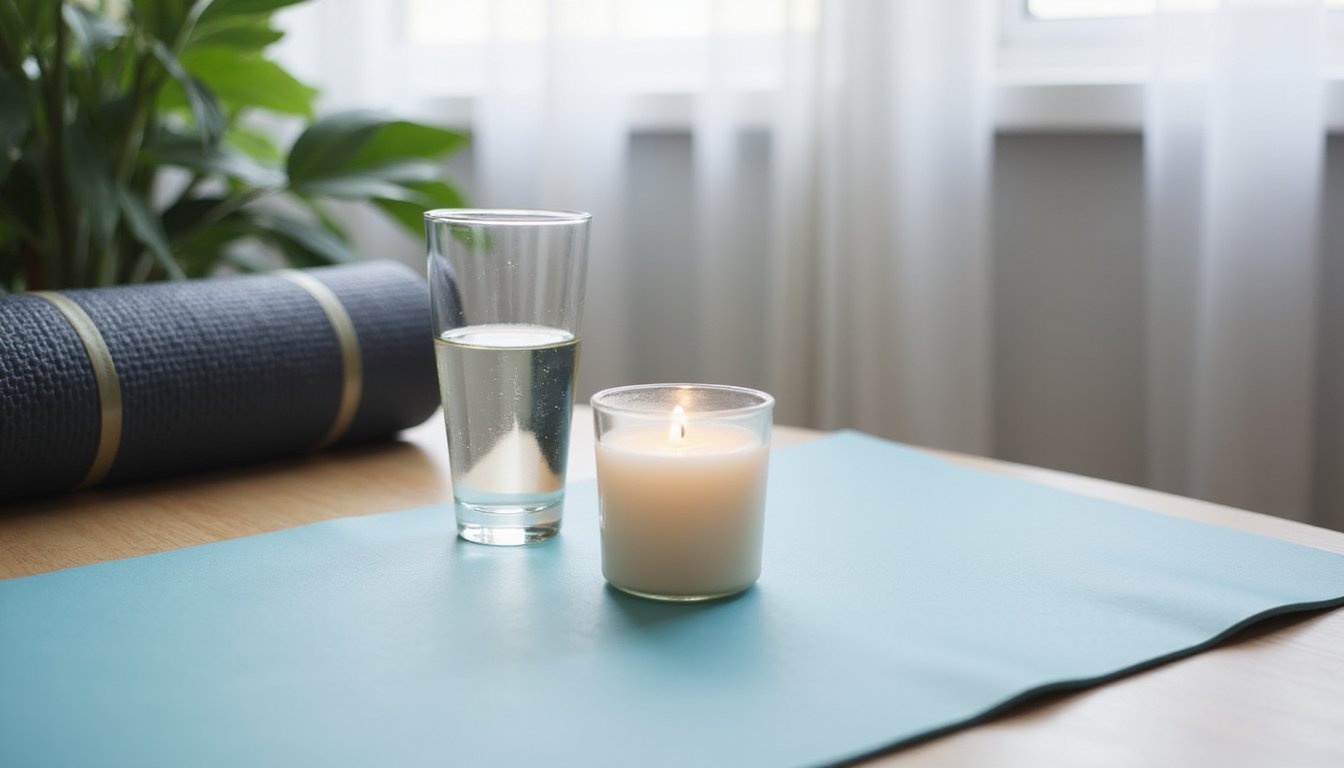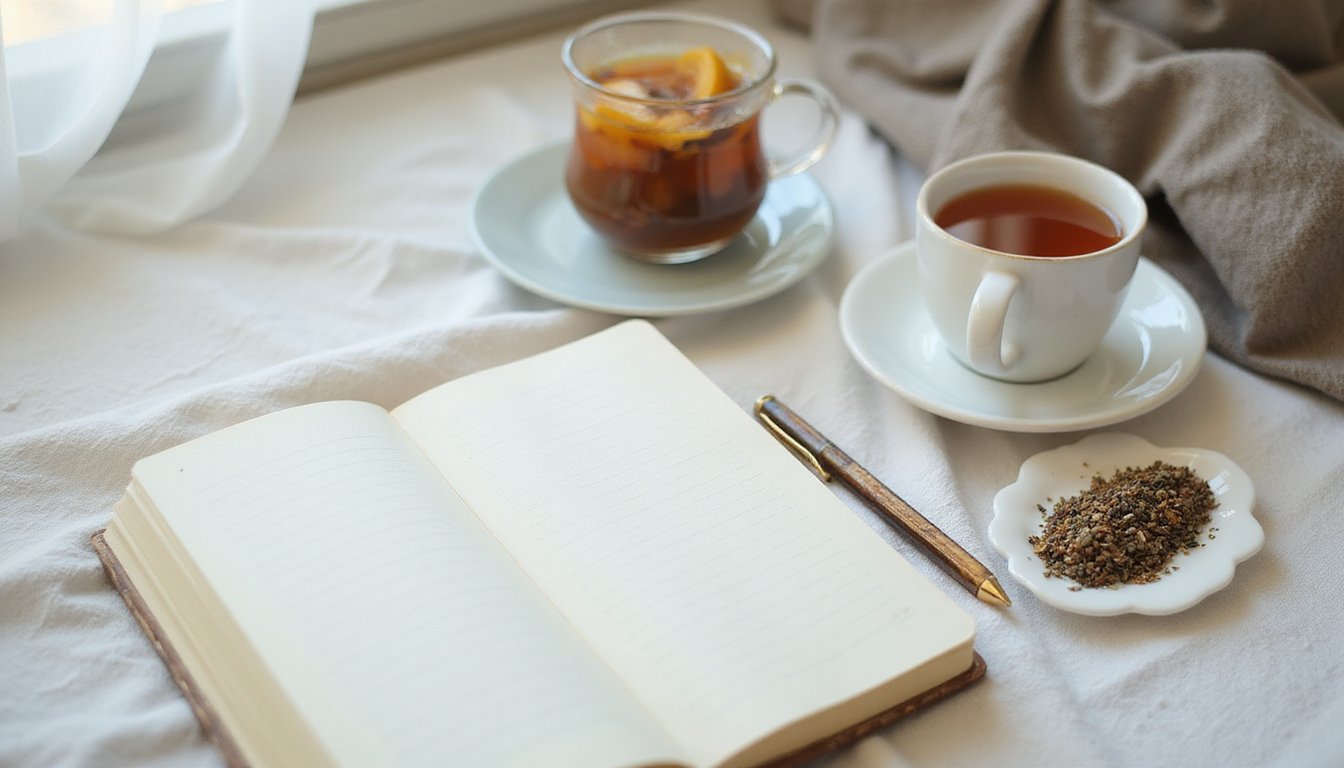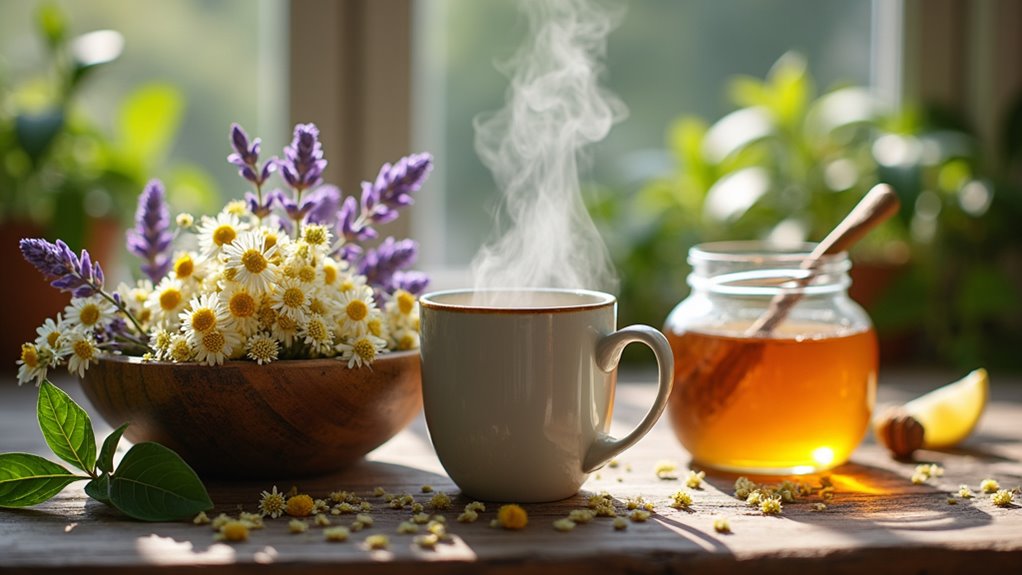When anxiety overwhelms you, you can quickly activate your body’s natural calming response through proven techniques. Start with box breathing: inhale for 4 seconds, hold for 4, exhale for 4, and hold for 4. Ground yourself by focusing on your immediate surroundings through your senses. You can also try gentle movement or progressive muscle relaxation to release physical tension. These evidence-based strategies work within minutes, and there’s a whole toolkit of effective methods to investigate.
Understanding the Physical Signs of Anxiety
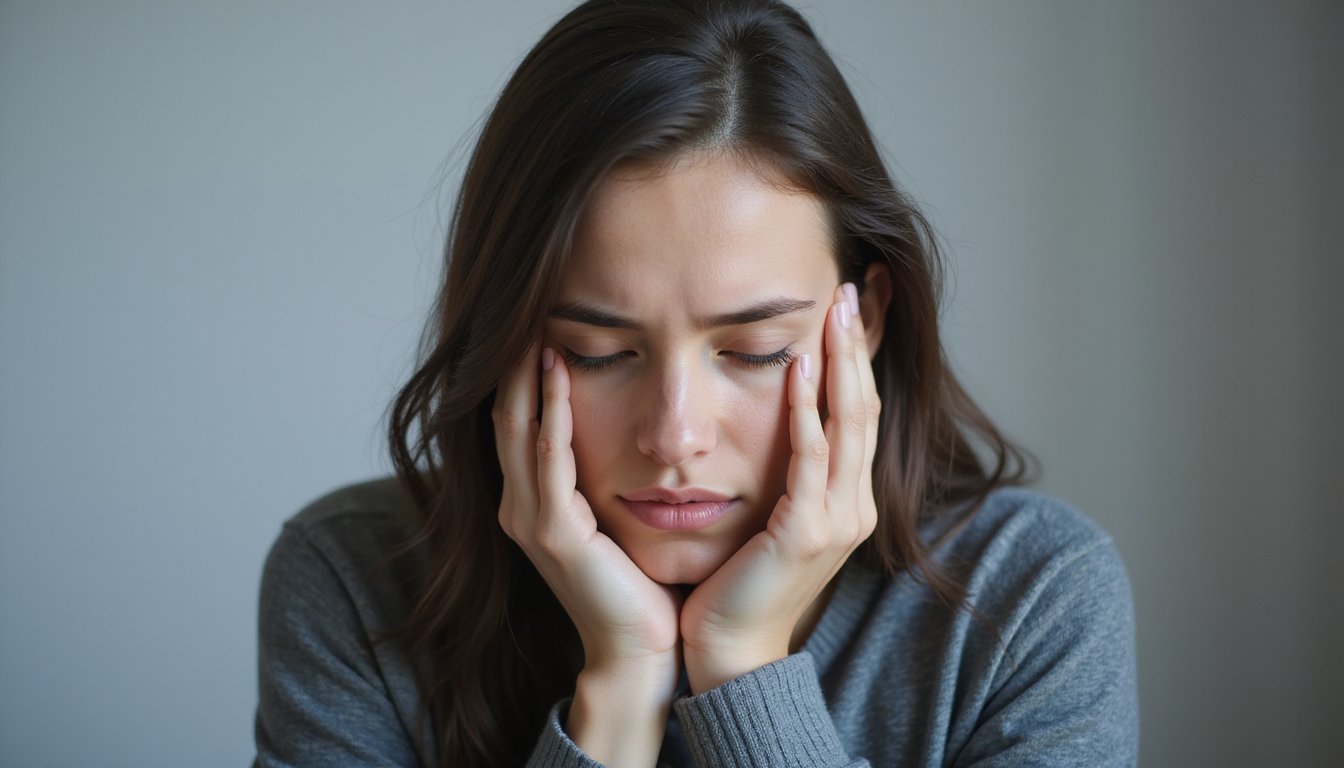
When your body experiences anxiety, it triggers a complex cascade of physical reactions that can feel overwhelming and frightening. You’ll notice prominent physical symptoms affecting multiple body systems simultaneously. Your heart might race or pound, while your muscles tense and tremble. These bodily expressions of anxiety often include sweating, rapid breathing, and digestive disturbances like nausea or “butterflies” in your stomach. Deep breathing exercises and meditation can help calm these physical symptoms when they arise.
You may also experience neurological signs such as dizziness, difficulty concentrating, or tingling sensations in your limbs. Your autonomic nervous system activates, causing temperature fluctuations and dry mouth. Understanding these physical manifestations helps you recognize that they’re natural stress responses, not signs of serious illness. While uncomfortable, these symptoms are your body’s normal reaction to perceived threats. Women tend to experience these symptoms more frequently, with twice the prevalence compared to men. These intense physical reactions can be difficult to control and may significantly impact your daily activities if left unaddressed.
Quick Breathing Techniques for Instant Relief
When you’re feeling overwhelmed with anxiety, simple breathing techniques like box breathing, belly breathing, and the 4-7-8 method can offer immediate relief based on clinical research. Box breathing’s equal-count pattern helps interrupt anxious thoughts, while diaphragmatic (belly) breathing activates your body’s natural relaxation response through increased oxygenation and vagus nerve stimulation. The 4-7-8 method combines these benefits with an extended exhalation phase, which research shows can quickly lower your heart rate and reduce anxiety symptoms within minutes. Recent studies demonstrate that focusing on extended exhale-focused breathing techniques like cyclic sighing exercise provides superior anxiety relief and mood improvement compared to other breathing patterns. These evidence-based techniques can be easily practiced in group settings or individually for effective stress management. These techniques are particularly valuable given the shortage of therapists and long wait times many people face when seeking professional mental health support.
Box Breathing Basics
During moments of overwhelming anxiety, box breathing serves as a powerful yet simple technique to quickly regain control of your emotional state. This structured method triggers immediate physiological changes, activating your body’s natural calming response while improving breathing regulation. Also known as sama vritti pranayama, this technique has ancient yogic origins.
The technique follows four equal phases of 4 seconds each: inhale deeply, hold your breath, exhale completely, and hold again. You can visualize your breath moving around the sides of a square, with each side representing one phase. While 4 seconds is standard, you can adjust the timing between 1-5 seconds based on your comfort level. Regular practice of box breathing reduces blood pressure and provides an immediate sense of calm. The practice can be enhanced by combining with meditation to deepen its stress-reducing effects.
You’ll find box breathing especially effective because you can practice it anywhere, anytime, whether you’re seated at work, standing in line, or lying in bed.
Belly Breathing Benefits
Despite its simplicity, belly breathing stands as one of the most powerful techniques for managing acute anxiety through direct physiological mechanisms. When you practice this technique for just five minutes, you’ll activate your body’s natural relaxation response, building long-term resilience against stress while bolstering social cognition and emotional stability. Research shows this is particularly beneficial for older adults’ anxiety management. Recent studies found that non-pharmacologic intervention through diaphragmatic breathing offers a cost-effective way to reduce both psychological and physical stress symptoms. Human-guided instruction helps ensure optimal results, as studies indicate in-person training maximizes the anxiety-reducing benefits of breathing practices.
Research demonstrates these compelling benefits:
- Immediately reduces anxiety by activating your parasympathetic nervous system
- Lowers cortisol levels and blood pressure within a single session
- Improves heart rate variability, indicating enhanced stress resilience
- Creates lasting effects that extend beyond the breathing session
- Works effectively for all age groups with no side effects
This evidence-based approach requires no special equipment or training, making it an accessible tool you can use anywhere, anytime anxiety strikes.
4-7-8 Method Explained
The 4-7-8 breathing method stands as a powerful antidote to acute anxiety, offering almost immediate relief through its scientifically-designed pattern of breath control. You’ll find this technique particularly effective due to its precise breath retention timing, which activates your body’s natural relaxation response. Make sure to wear loose comfortable clothing for optimal relaxation during the practice. Try using a calming affirmation while performing this technique to enhance its stress-relieving effects. Taking time to lengthen your exhale naturally triggers the body’s relaxation response through the parasympathetic nervous system.
| Phase | Duration | Effect |
|---|---|---|
| Inhale | 4 sec | Oxygen intake |
| Hold | 7 sec | Parasympathetic trigger |
| Exhale | 8 sec | Stress release |
The breath cycle duration of 19 seconds creates a deeper state of relaxation than shorter breathing exercises. You can practice this anywhere, sitting, standing, or lying down. Clinical studies show it reduces cortisol levels and blood pressure while promoting emotional stability. For best results, repeat the cycle 4-5 times over a 2-5 minute period.
Grounding Methods to Stop Racing Thoughts
When racing thoughts threaten to overwhelm you, grounding methods can serve as powerful anchors to the present moment. Through cognitive distraction techniques and sensory awareness amplification, you’ll find immediate relief from anxious thinking patterns.
Grounding techniques anchor you in the present, using sensory awareness and mental redirection to break free from overwhelming thought patterns.
- Focus on your five senses using the 5-4-3-2-1 technique: name five things you see, four things you can touch, three sounds you hear, two scents you smell, and one taste you notice
- Engage physically by walking slowly, focusing on each step, or practicing progressive muscle relaxation
- Count backward or list objects by category to redirect your thoughts
- Describe your surroundings in detail, noting colors, shapes, and textures
- Touch different surfaces or press your palms together to activate your body’s natural calming response
These evidence-based methods help interrupt anxiety cycles and restore mental balance quickly.
The Power of Cold Water for Calming Nerves

When you’re overwhelmed with anxiety, splashing cold water on your face can trigger your body’s natural calming response within seconds through the mammalian diving reflex. For the safest and most effective results, cup your hands with cold water from the tap and gently press the water against your face, focusing especially on the areas around your cheeks, eyes, and forehead. This simple technique activates your parasympathetic nervous system, quickly lowering your heart rate and helping to break the cycle of anxious thoughts.
Instant Parasympathetic Response Activation
Remarkably, cold water exposure offers one of the fastest natural ways to activate your body’s parasympathetic nervous system and reduce overwhelming anxiety. Through cold water therapy benefits, you can trigger an immediate calming response that helps restore balance when stress feels intense.
Your body’s natural dive response and vagal tone augmentation work together when you expose your face to cold water, creating powerful anxiety-relieving effects:
- Activates the vagus nerve, shifting your system from fight-or-flight to rest-and-digest mode
- Slows your heart rate through the diving reflex, promoting rapid relaxation
- Reduces stress hormones and emotional distress within minutes
- Improves your resilience to future anxiety-provoking situations
- Strengthens your parasympathetic response through regular practice
This evidence-based approach provides a practical tool you can use anywhere to quickly calm overwhelming anxiety.
Face Splash Safety Tips
While cold water therapy offers powerful anxiety-reducing benefits, practicing it safely optimizes its effectiveness and prevents potential discomfort. Start with lukewarm water and gradually decrease the temperature, aiming for a water temperature range between 50-60°F (10-15°C). Never use ice-cold water, as it can trigger adverse reactions.
Before trying this technique, check your skin sensitivity factors. If you have conditions like eczema, dermatitis, or cold urticaria, you’ll want to avoid cold water exposure. You should also skip this practice if you have heart conditions or Raynaud’s phenomenon. When you do splash your face, limit exposure to 10-30 seconds to prevent headaches or breathing difficulties. Remember to alternate between cold and normal temperature water to maintain the method’s effectiveness.
Simple Movement Strategies to Release Tension
The human body naturally responds to anxiety by storing tension in diverse muscle groups, but simple movement strategies can effectively release this physical stress. Research shows that incorporating dynamic spinal mobility and corrective posture adjustments can greatly reduce anxiety-related muscle tension and promote relaxation.
- Try gentle shaking movements to discharge stress hormones and loosen tight joints
- Practice arm swings while shifting your weight to activate calming optical flow responses
- Perform systematic muscle tensing and releasing exercises, working from feet to face
- Use bridge rolls to mobilize your spine and release back tension
- Incorporate slow neck stretches to ease tension headaches and upper body tightness
These evidence-based movements can help interrupt anxiety cycles and restore your body’s natural state of calm, especially when practiced consistently for 10-20 minutes daily.
Mindfulness Practices for Immediate Peace
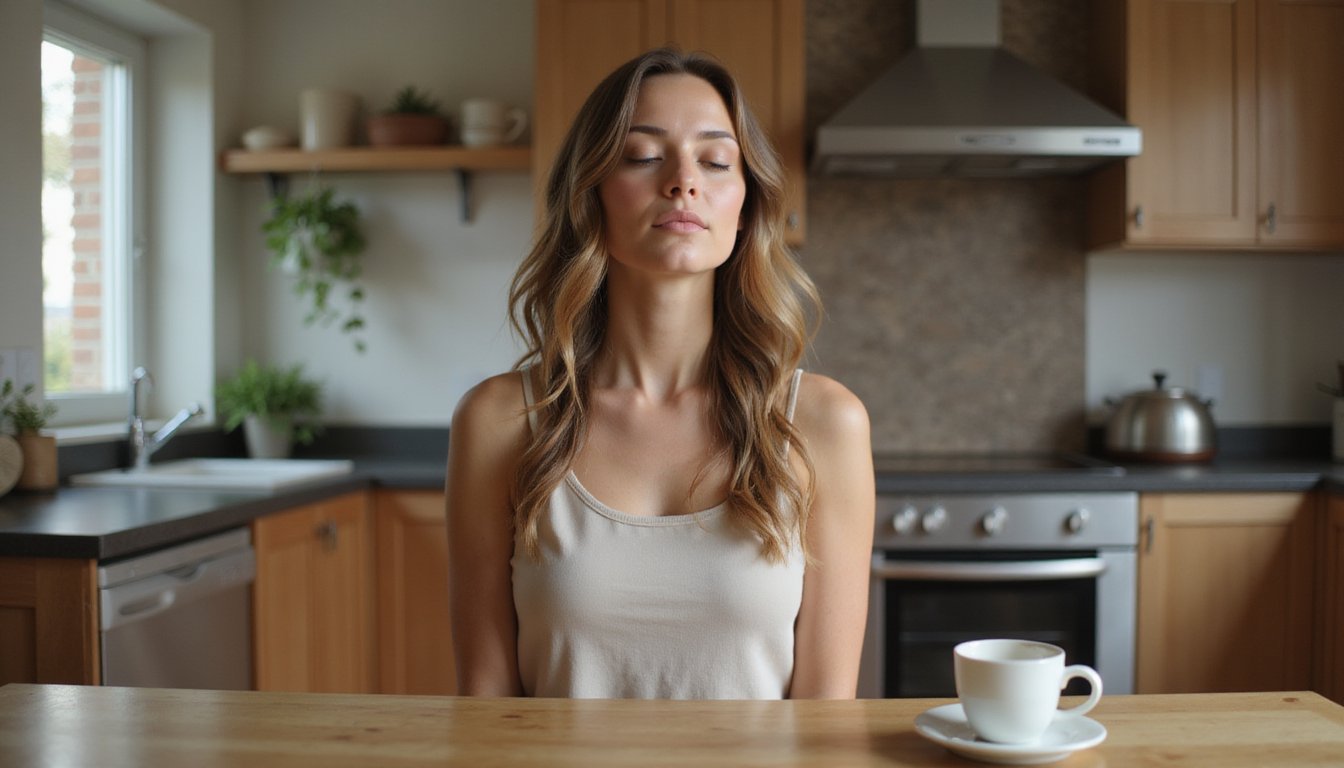
When you’re feeling overwhelmed by anxiety, bringing your attention to the present moment through mindful awareness can provide immediate relief. You’ll find that simple exercises like conducting a brief body scan, where you systematically notice physical sensations from head to toe, help activate your body’s natural relaxation response. These evidence-based practices work quickly to reduce acute anxiety symptoms by shifting your focus away from racing thoughts and into direct, moment-by-moment experience.
Present-Moment Awareness Exercises
Present-moment awareness exercises offer scientifically proven relief from overwhelming anxiety through structured techniques that anchor your attention in the now. By practicing present moment attunement, you’ll develop stronger mental flexibility to catch and redirect anxious thoughts. These evidence-based methods help with anxiety reframing by shifting your focus from worry to immediate sensory experiences.
- Practice structured breathing exercises like cyclic sighing for quick anxiety reduction
- Direct attention to mundane tasks, noticing sensory details while washing dishes or folding laundry
- Engage in brief daily mindfulness meditation sessions for cumulative emotional benefits
- Train yourself to notice when your mind wanders and gently return to the present without self-criticism
- Try mindful walking by focusing on physical sensations like footsteps and ambient sounds
These techniques become more effective with regular practice, strengthening your ability to stay grounded when anxiety strikes.
Body Scan Quick Guide
Building on mindful awareness techniques, body scanning offers a powerful, scientifically validated method for finding immediate peace amid anxiety. This holistic integration practice takes just 5-30 minutes and activates your body’s natural relaxation response, lowering stress hormones and calming your nervous system.
You’ll find the process straightforward: Find a quiet space, get comfortable, and follow guided audio or video instructions that direct your attention systematically through your body. This whole-person approach encourages you to notice sensations without judgment, helping disrupt anxious thought patterns while enhancing your connection to physical experiences.
The benefits are immediate and cumulative, from reduced cortisol levels after a single session to improved sleep quality when practiced regularly. You’ll develop greater emotional regulation, self-acceptance, and body awareness while building resilience against anxiety.
Progressive Muscle Relaxation Guide
Through decades of clinical research and practice, Progressive Muscle Relaxation (PMR) has emerged as a powerful, scientifically-validated technique for reducing anxiety and stress. You’ll find this daily relaxation routine particularly effective when practiced consistently, as it helps your body distinguish between tension and relaxation states.
Progressive Muscle Relaxation teaches your body to recognize tension and release it, making it a proven method for managing daily stress and anxiety.
Follow these steps for a basic muscle relaxation demonstration:
- Sit or lie comfortably in a quiet space where you won’t be disturbed
- Starting with your toes, tense each muscle group for 5 seconds
- Release the tension and relax for 10-20 seconds, noting the difference
- Breathe steadily while moving progressively through your body
- Pay special attention to commonly tense areas like your neck, shoulders, and jaw
Remember to skip any painful areas and maintain regular breathing throughout the exercise.
Emergency Self-Talk Strategies
While physical relaxation techniques offer powerful relief, your internal dialogue plays a similarly critical role in managing anxiety. Using quick self cues like “This will pass” or “I can handle these symptoms” can interrupt panic cycles and reduce anxiety intensity.
Grounding techniques that focus on present-moment facts rather than imagined threats help calm racing thoughts. When you’re overwhelmed, pause and remind yourself “This isn’t an emergency” or “Let my body do its thing.” Research shows these self-statements notably decrease death anxiety and obsessive thoughts.
For immediate relief, combine problem-focused self-talk with acceptance of uncomfortable feelings. Rather than asking “What if?” challenge catastrophic predictions by questioning their certainty. Remember, you can acknowledge discomfort while still maintaining rational thought and effective coping strategies.
Pressure Points for Anxiety Management
The strategic application of pressure points offers a scientifically-supported approach to managing anxiety symptoms. Research shows that specific acupoints, when stimulated through relaxing self-massage, can extensively reduce anxiety levels and promote calmness. You’ll find these portable anxiety tools particularly helpful during stressful situations.
- Press firmly between your eyebrows (Yintang point) for 1-3 minutes using circular motions
- Apply gentle pressure to your wrist crease (Shenmen HT7) in line with your little finger
- Massage three finger-widths below your inner wrist (P6 point) using steady pressure
- Stimulate the web between your thumb and index finger (Hegu LI4)
- Target the upper part of your ear (Auricular Shenmen) with light tapping motions
These evidence-based techniques work by modulating your body’s stress response and neurotransmitter activity.
Creating Your Personal Panic Prevention Plan
Developing an individualized panic prevention plan empowers you to take control of anxiety symptoms before they escalate into full-blown attacks. Start by keeping a trigger journal to identify your specific anxiety patterns and stressors. This awareness will guide your stress management planning and necessary mindset adjustments.
Create a personalized toolkit that includes immediate coping strategies like deep breathing exercises and grounding techniques. Integrate long-term lifestyle changes such as regular exercise, consistent sleep patterns, and mindfulness practices. You’ll also want to establish a reliable support network of professionals and trusted individuals.
Set achievable goals with your therapist and monitor your progress regularly. Remember to review and adjust your prevention strategies as needed, ensuring they remain effective for your evolving needs and circumstances.
Frequently Asked Questions
Can Anxiety Cause Long-Term Physical Health Problems if Left Untreated?
Yes, untreated anxiety can seriously impact your long-term physical health. When you’re experiencing chronic stress impacts, your body’s fight-or-flight response stays activated, leading to cardiovascular problems, weakened immunity, and digestive issues. Anxiety-induced inflammation can damage your organs and increase your risk of developing conditions like heart disease, diabetes, and autoimmune disorders. Your musculoskeletal system also suffers, resulting in chronic pain and tension throughout your body.
How Do Prescription Medications for Anxiety Compare to Natural Remedies?
Prescription medications typically offer stronger and faster anxiety relief, with effect sizes around 2.02 compared to 1.11-1.56 for natural approaches. While some effective herbal supplements and cognitive behavioral therapy can help manage symptoms, they’re generally milder but have fewer side effects. You’ll find medications work for 60-85% of patients, though they may carry risks like dependency. Your best choice depends on your anxiety severity, personal preferences, and medical history.
When Should I Seek Professional Help Versus Managing Anxiety on My Own?
You should seek professional help if anxiety disrupts your daily functioning, causes persistent physical symptoms, or lasts several weeks despite your efforts at recognizing triggers and implementing coping strategies. While you can manage mild, situational anxiety through self-care techniques, don’t hesitate to get help if you’re experiencing increased avoidance behaviors or thoughts of self-harm. Professional support is especially crucial if your anxiety co-occurs with depression or substance use issues.
Does Childhood Anxiety Predict Anxiety Disorders in Adulthood?
Yes, childhood anxiety often predicts adult anxiety disorders, especially when combined with early childhood risk factors like behavioral inhibition or difficult temperament. If you experienced anxiety as a child, you’re more likely to have heightened physiological stress responses as an adult. However, it’s critical to know that this isn’t a guarantee – many people successfully manage or overcome childhood anxiety through therapy, support systems, and developing effective coping strategies.
How Can I Support a Loved One Experiencing Severe Anxiety Attacks?
You can effectively support your loved one by providing emotional validation during anxiety attacks – acknowledge their feelings without minimizing them. Stay calm and present while suggesting coping techniques like deep breathing or grounding exercises. Don’t pressure them to “snap out of it.” Instead, remind them you’re there to help and the attack will pass. Consider encouraging professional assistance and offering to accompany them to appointments for supplementary support.

